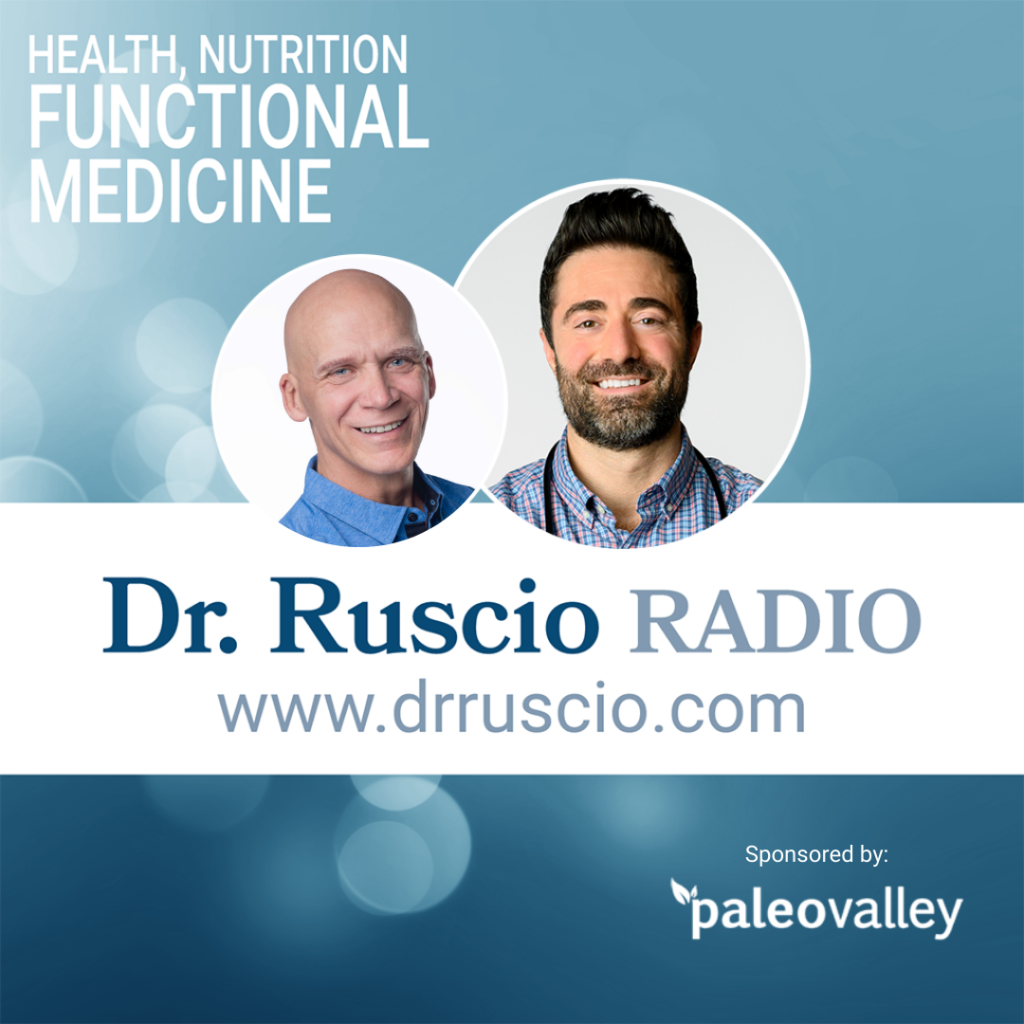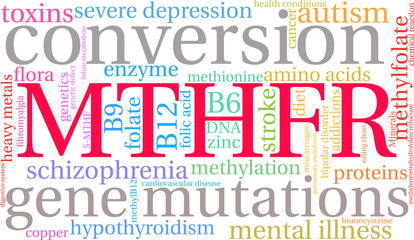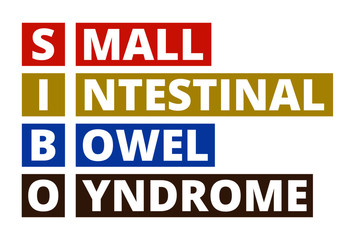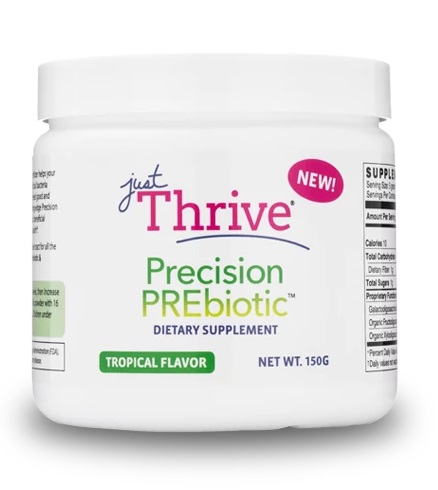Genetics, Peptides, and Data-Driven Healthcare
A concierge model for peak performance with Dr. Dan Stickler.
How do you optimize your health using data? In this episode, Dr. Dan Stickler shares how he and his team use data to help patients overcome their health obstacles and maximize performance. Genetics and other forms of testing, health tracking devices, and highly individualized service all come into play. You’ll also learn about peptides—molecules from the body that can be introduced for targeted outcomes—that he’s finding the most useful for gut health, cognition, and anti-aging.
Episode Intro
Dr. Michael Ruscio, DC: Hey everyone. Welcome back to Dr. Ruscio Radio. This is Dr. Ruscio. Today I’m here with Dr. Dan Stickler and we are going to be discussing—for lack of a better term—a system-wide analytics approach to improving your health. And I’ll let Dr. Dan here elaborate on that more in a moment. But what I’m hoping to get out of this conversation is comparing me being a bit of a minimalist and Dan being, I think, more of a data-driven physician.
[Continue reading below]
Model
- Highly individualized exclusive service
- Medical team meets to assess your health issue
- Test and interpret your genetics
- Use of personal tracking devices to collect data
Cost
- Several thousands of dollars
Genetic approach
- Measure treatment outcomes carefully
- Treat to the gene prediction and then correct course if needed
- Polymorphisms are adaptations over time
- Online genetic tests are not good predictors for clinical treatments and outcomes
- One gene does not predict one outcome
Peptides
- Gut Health: BPC157, Thymosin Beta 4, AOD
- Cognitive: Cerebrolysin, Dihexa,
- Anti-aging: Tesamorelin, CJC + Ipamorelin
Where to learn more
In this episode…
Episode Intro … 00:00:40
A Human Is a Complex System … 00:04:14
A Concierge Model for High Performance … 00:12:18
How Does Genetic Data Inform Treatment? … 00:19:39
Assessing the Larger Genetic Picture … 00:26:27
Peptides for Health, Gut Healing … 00:34:27
Peptides for Cognition … 00:39:23
Anti-Aging Peptides … 00:41:04
Episode Wrap-up … 00:45:02

Download this Episode (right click link and ‘Save As’)
How can we compare our notes here and find pros and cons, and help people to navigate that one question? And then also hopefully give a better understanding of the best way to use some of these tracking devices. Maybe sleep tracking, exercise tracking, HRV. So we’ll really get into many of these things and hopefully more as the discussion unfolds here. So Dan, welcome to the show and thanks for being on.
Dr. Dan Stickler, MD: Oh, great being here. Thanks for having me.
DrMR: Can you tell people just briefly about your background and then more about your model. You gave me the rundown before we started recording and there’s a lot there. I want to give you a chance to articulate it so I don’t just shortchange it with a brief summary.
DrDS: Yeah, so my background is as a general vascular surgeon. I went into medical school with an idealized concept of what a physician did. I had this idea that it was about making life better for people. And it does to some degree, but typically what we learned in medical school was a disease-driven model and pharmacology. We didn’t really delve into a full-body system homeostasis and, really, lifestyle patterns that can be very effective. So it was disenchanting for me in that regard. And I saw internal medicine, family medicine, those things as more of a stepwise postponement of death rather than really trying to elevate people.

It wasn’t until I went to Cenegenics just to learn hormone management… I was working with a lot of obese patients and I found a lot of hormonal issues and wanted to learn how to manage it. So I went to Cenegenics back in 2005. And I was introduced to a whole new concept of healthy people actually going to the doctor and getting something out of it. That just lit the fire under me. I mean, that was what I had imagined in somebody who was doing it.
Their program was a good start. I felt like there were a lot of limitations to it, so over the years I continued to develop my own program. About 2009, I just made the decision to step completely away from surgery. Walked out of the OR one day and I said, “I’m done. I’m not going to do any more.”
As an overlap of that, in about 2007, 23 and Me started doing health reporting. I had many clients coming to me, saying, “What does this mean?” I had no idea what a single nucleotide polymorphism was. I didn’t have any of that in medical school. So I had to learn genetics on my own and it became quite an obsession for me. I started playing with it in my clients, developing my own templates and everything like that. And eventually I had enough clinical experience with it to really have some good working knowledge of the genetics, and that became a big part of what we do.
A Human Is a Complex System
Over the years, our program has progressed. And it continues to progress, it’s a very dynamic program. But what we are about is really stepping back from the old model of looking at the human system as a complicated system. What I mean by that is, complicated systems are systems that are highly predictable.

They’re 100% predictable, based on knowing the inputs to that system and how the system responds to them. It’s like a robot is a complicated system. What we have done is taken the original concept of medicine that the Greeks had, and we’ve molded it into treating the human as a complicated model, essentially a robot. That’s why we have algorithms in medicine and we put people through these flow diagrams and everything like that.
And what I came to was that we need to start looking at the human system as a complex model. Complex, meaning that it is adaptable, it is unpredictable and very much an n of 1 approach, rather than looking at this as a population-based outcome. What that led me to was looking at data.
Data has been the real driver in our practice. We try to collect as much possible data as we can on each individual, to identify where they are in that moment of time that they come to see us. So we’re getting genetics, we’re getting lab work, we’re getting cognitive testing, we’re getting epigenetic age, we’re getting brainwave mapping, we’re getting autonomic nervous system assessments. And we’re integrating that all into how they interact with each other and coming up with an idea of what that human system actually looks like right now.
Then we say, “Okay, where do you want to be?” When we look at where you want to be, we don’t look at any limitation on that. There are no lines drawn (other than in chalk) where you’ve put your perception of limitation on what’s possible. We feel like that with what we’ve got now through technology, through medical science and advances, that they keep coming at such a rapid rate that we’re essentially erasing those lines. What you feel is of potential can possibly be of potential for you.

DrMR: Okay, so a lot there though to pick into. One of the things that I grapple with is, when we take a multi-system approach and assess various measures of a given system… Let’s say, cognition. There might be cognitive tests that you can use, simple memory. What does someone’s short-term visual memory look like? You have four dots pop up on the screen and the user has to be able to replicate that dot pattern. That would be one crude example of a way we could assess someone’s short-term memory as a cognitive measure.
The challenge I bump up against there is, if we have a lot of measurements, to the exclusion of understanding that one or two key items might be skewing all those measurements, we can come away with a measurement-heavy approach that doesn’t inform or better sharpen the clinical recommendations one would make. So you assess 100% of the system, but the cause of those symptoms may only be coming from 15% of the system. How are you reconciling that in your clinical model?
DrDS: Well, that’s the beauty of the complex system approach. What we take into account is what they’re subjectively experiencing. We do both the CNS Vital Signs and the Cambridge Brain Sciences assessment to get a baseline of their cognitive testing. Then we do the 19-channel qEEG Brain Map. I’m actually trained in reading the cues on the brain map, but I send them off to someone who is an expert in reading performance-style cues.
So they take a look at that and then I provide them with all the clinical information that’s relevant: history of head traumas, cognitive scores on various tests, what they’re experiencing. And they will give me back, “Okay, well…” Especially since we deal with mostly exceptional people. Most of the people who come to our clinic are high-achievers. They’re all going to have an abnormal brainwave pattern when they’re compared to a normative database. If you’re told you’re normal when you’re compared to a normative database, it’s probably not the best thing here.
What we have to determine is, is that brainwave pattern something that’s beneficial? Is it something that is actually causing some of the symptoms they’re reporting or what we’re seeing in the testing?

And that’s just a piece that we put back in, so we’ve analyzed this. Throughout this, we’re also looking at nutrition, at sleep, at cognitive function as a piece of that. We’re looking at environmental health and environmental exposures, hormone levels, supplementation patterns. So we’re looking at all of that simultaneously and how that interacts.
The example I always use is of physicians, currently, when they look at a woman who comes in with pain and burning on urination. They get the urine culture, find a bacteria, and they have a sensitivity pattern. What’s the next step? You basically put them on an antibiotic and then they go on their way.
In a complex system approach, you’d want to really start to look at where that particular bacteria came from. How did it get to where it ended up in the bladder? Why is that person’s immune system not responding in the way that it should be responding to this? And what can we do as far as an intervention? If you give an antibiotic, how’s that going to affect all the other systems in the body? Or if we start to look at alkalinizing the urine. Well, why does that work? What’s happening with this and what’s actually alkalinizing the urine?
Even the approach with cranberries. It’s interesting because people have always used cranberry juice and they said, “It’s great, it alkalinizes the urine.” Really, their whole thought process was, it’s because it alkalinizes the urine. But it turns out there are certain substances in cranberries (can’t remember what the term for the chemical markers are) that accumulate in the urine. They bind up iron, so it starves the E. coli of iron, and it helps to resolve the urinary tract infection. So, you’ve got to look at all of these things. And it’s just exponential how far you can go down the rabbit hole with this, but you just try to expand it as far as you can to get an idea of what’s happening.

This is the way we do it with all aspects of health. This person’s complaining of brain fog, poor attention issues. We’re seeing positive testing for that. We have a brainwave pattern that predicts that, yet they’re not sleeping well. Okay, so what are we going to address first? And are we going to address multiple things simultaneously?
That’s why when we actually decide what to do with a client, or when we’re working with the decision matrix, we usually have a whiteboarding session with five to seven clinicians and coaches in the same room. We present this on a whiteboard, all of these aspects. And we get everybody’s input, because frequently you will hear things that you didn’t think of.
A Concierge Model for High Performance
DrMR: Mm. There’s an obvious question I have to ask: what does this cost? It sounds great to have a team of doctors almost as one would see in an episode of House. But then the cost of that has got to be fairly high.
And you said that you’re looking at high-performance individuals. And rightfully so, for someone who’s trying to get that last bit of performance, it would to some degree make sense that they may have to incur a higher cost. Now they’re really reaching into the specialized echelon of care. But what does the cost look like here?
DrDS: It’s not inexpensive. We’re talking a range. We have programs that are $15,000, $30,000, $56,000 for the year.
DrMR: So, it’s kind of like a concierge model. Is that what you’re doing?

DrDS: It is. So what we do is, you’re assigned to one clinician who will meet with you for 30 minutes every month on a video call. We’re also monitoring biometric data, so we give all of our clients Garmin Fenix 5 watches, and they’re wearing those. We can check in on their dashboard once a week and see what their sleep patterns are, their stress patterns, their resting heart rates, their activity levels, how they’re responding to exercise, how they’re recovering.
So we’re constantly monitoring them and giving them the feedback that they need. And each month we check in. We say, “What’s working, what’s not working? What goals did we achieve? What’s the next step? Let’s move forward.” So, it’s a continued progression throughout the year.
We found that every month calls are really important. We were doing every three months for a while and we found that the drop-off rate was pretty strong with that. But monthly calls, we maintain the accountability and kept them really focused and moving forward. Our physicians are very well in-tune with every client. None of them have to even open a chart because they know exactly who that client is, what drives them. They spend five to six hours in that two-day evaluation, just one-on-one with that physician.
DrMR: Maybe we can run through an example or two. I’m curious to try to illustrate for our audience what this looks like, this care model in a more detailed fashion. Perhaps we could take two different presentations. One person with brain fog, we’ve already started with that one. And then, also one who was having digestive complaints.
I’d be curious, obviously there’s variance from person to person, but might there be a somewhat typical scenario you could play out for each one of those scenarios? Give us a sense for, okay, day one, this person is complaining of brain fog and poor attention. And while this is not an absolute rule, oftentimes we’ll find A, B or C cause and we’re finding XYZ treatment to be effective. Can you run us through one of these, starting with brain fog, as an example?

DrDS: To a degree I can. We really don’t recognize or give credence to specific issues as far as a focus. So even somebody who’s coming in with brain fog versus somebody who comes in and is overweight, somebody who comes in with MS, our approach is essentially the same. We will focus attention on those areas, but not to the exclusion of other areas. So we are addressing sleep, nutrition, supplementation, hormones, environment, and all of that, no matter what they’re coming in with.
We may have specific approaches when we have a symptom that’s standing out. But what we’ve found is that when we can get the human system into homeostasis, it will take care of most things on its own. It’s never one thing that is creating an outcome. That’s not the way the human system works.
So that’s why we say if you have six of the seven categories of lifestyle that are optimized, but one is not, you’re not in homeostasis. You’ve got to get them all there. It’s a matter of getting good quality and quantity of sleep, it’s a matter of a nutritional plan that the body’s responding most appropriately to, a supplementation plan.
We’re kind of minimalist on supplementation. It’s very, very individualized. And we have a rule, when somebody comes in, the first thing we ask them about their supplementation list is, “Why are you taking it? And what are you measuring to make sure it’s doing what you think it’s doing?” If they can’t answer it that, we mark it off the list.
We will potentially add it back on if we identify a reason for it and a way to measure it. But otherwise we will not use it. So, everything that we do, every intervention we do, we set up metrics to say, “Okay, how are we going to determine whether this is working or not?” Subjective is a piece of it, but it’s a very small piece. I mean, it’s an essential piece, but we’ve also got to have the objective measures that confirm that we’re actually doing something. Because a lot of the times people will have subjective responses that don’t truly translate.

I’ve had a woman who felt like her brain fog was better when she was doing a bulletproof plan of paleo eating and bulletproof coffee. And she was a fit 50-year old, 26% body fat. She was working her tail off in the gym and just wasn’t making any progress on her body composition. The only thing that she noticed different with that bulletproof approach was that she had an improvement in her brain fog. And when we went through her full evaluation, we identified major issues with saturated fats. So we changed her dietary pattern to be more consistent with her genetics.
We said, “Okay, well, here’s what we’re going to measure. We’re going to measure particle counts and your cholesterol.” She came in with total cholesterol of 480. And this is a fairly fit, healthy woman, and her particle fractionation was just very poor. So we shifted her to a more Mediterranean style diet and did that for two months. She would not give up her bulletproof coffee during that two month period, but in that two months, she dropped 100 points on her cholesterol. And definite improvement in her pattern, but she’s still in the 370 range.
So it was enough to get her to give up the bulletproof coffee and try just regular coffee. And in the next two months, she dropped her total cholesterol down to 189 with a very healthy fractionation pattern. On top of that, she lost 10% body fat, and she’d been trying to do that for three years prior with that plan that she was on.
It wasn’t just the dietary pattern. The other thing we worked with was her stress pattern. So, we identified an autonomic nervous system that was highly sympathetic. And we started working with some biofeedback to get that in the line as well, and some other things like her sleep patterns and all of that. So, I can’t directly attribute the outcome just to nutrition, but it shouldn’t be one thing anyway. It doesn’t work that way.
How Does Genetic Data Inform Treatment?

DrMR: Sure. And I agree with the pattern there that you’re describing in this particular patient. The thing that I question is, how much utility do we garner from gene testing, knowing that for some people they won’t do well on a lower carb, higher fat diet? They may be someone who overindulges in fat very easily and or metabolically doesn’t handle fat well.
Sometimes from my vantage point, we can just run the experiment of, “You’re expressing some of these signs of burnout, which can happen when you’re training hard.” I’m assuming she was training hard. “And you’re doing low carb, and you’re using caffeine, obviously with the bulletproof coffee. Let’s shift you to a higher carb intake, lower the fat down a little bit, and repeat some of these simple measures.” So that would be my only pushback there, that we don’t necessarily need to do a genetic assay to come to that same conclusion.
DrDS: And I love that you brought that up. I agree with you 100% on that. But I also think that having the genetics can give you that extra level of probability.
Sponsored Resources
DrMR: Hi everyone. I’d like to thank Just Thrive who helped make this podcast possible, and to tell you about their prebiotic, Precision PREbiotic. This contains a blend of three different prebiotics; galacto-oligosaccharides, fructo-oligosaccharides, and xylo-oligosaccharides. These three prebiotics work together to feed your intestinal bacteria.
Now, patients with impaired digestive health should be cautious with prebiotics, but this does not mean that prebiotics should be avoided. Prebiotics have shown the ability to improve digestive symptoms, encourage growth of healthy bacteria, decrease inflammation, and blood sugar.
So a trial of prebiotics should be included in your gut health plan. This is why I include prebiotics in the Healthy Gut, Healthy You program. If you visit thriveprobiotic.com, you can use the code RUSCIO15, for a 15% off discount, which can be applied to all Just Thrive products. They are also available on Amazon. Check them out.
DrDS: It’s funny because our company has a genetics division. We actually have a genetic test and we do large lifestyle reports with genetics. And I can tell you, probably five years ago, I used to think that it was the end-all be-all. You get the genetic data and you put people on exactly what you’re finding with the genetics.
The more I learned about genetics, the more I realized how far off that was. What people don’t realize—and I know you and I understand this, but the general public—is when we get testing through 23 and Me, or anything that does single nucleotide polymorphism analysis, this is not looking at mutations in our genetics. This is looking at variations that have occurred ancestrally to really promote thriving in a particular environment. And we can’t look at one gene equals one outcome. In fact, it’s not even a polygenic thing, where we can look at five or six genes and predict an outcome. They’re calling the human genome omnigenic, which means every gene in some way contributes to an outcome.
So what we look at with genetics is purely probability-based. It can shortcut a lot of things. Sure, you can look at it and say, “Okay, well, ancestrally you’ve got a lot of Inuit-Eskimo in you. I can predict pretty well that they’re going to do okay with saturated fat.” But if they’re Southeast Asian from genetic ancestry, they’re probably not going to do well on a high-fat diet.

And in the United States we have such a mix of ancestry. We’ve had really good outcomes with our genetic probabilities. But most of the genetic tests that are out there are developed as business models. They take the research, and just say, “Oh, this gene predicts this, so let’s put this in there and tell everybody that this is what they are.” Like ACTN3 for the sprinter, versus the endurance athletes.
It’s such bad science. It really is. Polymorphisms are purely just adaptations over time. Anybody that calls a polymorphism, I hear “the MTHFR mutation” all the time and it just makes me cringe because–
DrMR: Same.
DrDS: –25% of the population is going to have a variant.
DrMR: Right.
DrDS: And the definition of a mutation is less than 1% of the population. So, we are far off from that. There are actually benefits to having a homozygous MTHFR. If you’re in a folate-rich environment, fetal survival is higher. You have lower cancer rates, especially with colon cancer, when you carry a homozygous risk. But the idea is that you have to look at, “How can I optimize my dietary pattern to match ancestrally what I’m carrying, that has adapted over time?” And so, this is where we use the genetics piece as another metric. Just another piece to add into that.
The people who look at the genetics and they try to, I say, dazzle you with the science, are the ones to stay away from. When they’re looking at, “Oh, well you have this variant and it controls this gene in this pathway,” they don’t know what they’re talking about when it comes to clinical application of it.
A big part of what we do is we have an academy. We teach clinicians epigenetics from a true science basis. The science of epigenetics is fascinating. I say that the DNA is the hardware of the human system, but the epigenetics is the software that’s loaded on there. And we have the ability to actually shift that.
So no matter what you’re dealt, there’s a pretty good chance we can figure out some way to modify, through lifestyle patterns, through nutritional patterns. Every food is a bioactive nutrient. Every food that we consume can change the genetic expression in some way. So it’s looking at this whole system as a system that does not even end at the skin, that includes the environment that you live in, and how it all interacts as one organism, essentially.
Assessing the Larger Genetic Picture
DrMR: And in terms of testing and interpreting the genetics, it seems there’s an emergent camp that is looking to assess anywhere from 12,000 to the full 20,000 gamut of genes.
What I’m coming to understand—and I’d love for you to modify this at all or give the way you’re doing this—is what some clinicians are doing now (and maybe the more in-vogue approach) is not to make it a one-polymorphism-centric recommendation. Like, if you have MTHFR, in my opinion, that’s pretty much meaningless. And you alluded to that in a way. That’s not abnormal if 25% of the population has it. In isolation, what that tells you clinically is, in my opinion, close to nothing.

But what I’m coming to understand is, clinicians are now looking at the total genetic picture. Looking for systems of the body where there might be more polymorphisms that could indicate you have dysfunction with detoxification, as compared to, you have this function digestively. I’m just throwing out some arbitrary examples. But is this the approach that you’re using, looking at the whole genome and looking for systems that are flagging and hot, so this is a system we should focus on? Is it more granular than that? What does it look like?
DrDS: Yeah, we look at key genes and gene variance in each area. So when we’re looking at methylation patterns, we essentially look at about eight different gene variants. And those gene variance can range from the MTHFR to FOLR1.
And we use the genetics to look at it from this standpoint. One, do we have a good MTHFR methylation pattern system? Do we have receptors on the surface that are adequately picking up that folate? And do we have transporters that are actually bringing it into the cells? And again, it’s not an absolute. It’s a probability base. Even when we train our coaches, we will give probability outcomes in the reports, but there is a big section where the coach’s notes go. And we tell coaches that you cannot supply this report to a client without fully interacting with that client.
So one of the things that we do is teach them a lot of the symptoms of under and overmethylation. And so, the first thing they’re doing is asking them about these patterns that they’re seeing, in that, is the pattern consistent with what we’re seeing in the genetics? Let’s say it is and we’re suspecting an undermethylation pattern.

Then we start looking at, okay, what can we do to intervene? And if we do this, what are we going to measure? If we give them methylfolate, what response do they have? If we give them SAMe, what response are they going to have? Are we resolving these outcomes? Are we seeing changes in certain labs? The idea is that we want to have everything relevant to the probability basis, not to the absolutes.
And I think this is where people just go wrong. Human health is the most unpredictable thing there is. I mean, it was like surgery. Somebody comes in with abdominal pain and it’s like a Christmas package. You don’t know what you’re going to find until you open it up. Even if you get scans and everything, you’re still going to be surprised by something.
DrMR: I’m glad that you say that, because I wholeheartedly agree that patients, especially, tend to look at lab results 100% literally, rather than understanding there’s a probability. Why I think that’s so destructive is, when you’re looking at a lab result literally, it can short-circuit your ability to conceive of the fact that whatever treatment you may use for that one lab marker may not work for you. When you do conceive that there’s only a probability of a given treatment helping you, then you listen to your body, or you look for other indicators that it’s working. But you’re also open to the fact that it may not be working, and some kind of modification may need to be made.
And I use this example often: when people get a small intestinal bacterial overgrowth diagnosis, they oftentimes will change their entire diet to conform with a SIBO-friendly diet, even if some of those foods clearly don’t work for them.
But they’re so indoctrinated into thinking that they have to look at that SIBO diagnosis literally, they do it to the exclusion of listening to their body, and understanding that it’s only a probability that the SIBO diet will help you. You may not fall into that probability, and you may have to eat foods that are not on the SIBO list. And you may actually feel better when doing so.

DrDS: Absolutely. Yeah, I laugh about that because I had a client that came in, had seen a functional doctor, and they had done a SIBO test on them.
And they were positive, profoundly positive for SIBO. And I said, “Well, how did your symptoms do with the treatment?”
He said, “Well, I didn’t have any symptoms.”
Why did they test it? They just thought it might be related to something. So, he went through this whole treatment protocol with it and was miserable on the treatment. He said afterwards, he felt no different from a GI standpoint. It didn’t resolve what they thought they were treating, I guess.
But it’s so funny how there’s a shotgun approach with labs. To me, so many clinicians rely on labs and not the art of medicine anymore. It’s a sad state of affairs.
I think a lot of it has to do with the time that we’re allocated to spend with clients. And it’s what I like about what I do. Yes, we are exclusive, and we have a very expensive program. But we try to share as much knowledge as we can through blogs, through podcasts, and all that. We also train the coaches, which will work with clients $100 for two sessions a month. It varies on what can be offered, but we try to get our model out there.

We use the higher-end clients too, because they can inform, we can collect this data, we can start seeing correlations and causations and start to really get a greater depth of knowledge of how each system interacts overall, by having all of this data. Eventually we want to have an AI that can read into our data and actually start finding the correlations that we’re not seeing.
DrMR: Yeah, eventually we’ll all be replaced by robots, it seems like. But hopefully that won’t be in the near future!
Peptides for Health, Gut Healing
What about peptides? We don’t have a ton of time left, but I’d love to get your thoughts on a few peptides that you find to be particularly effective. I’m always curious about some of the either tissue-healing, like your BPC 157, or the ones that can help to enhance growth hormone production, like your Sermorelin and Ipamorelin.
But it seems now that there are so many peptides and it seems like every couple months there’s a new few that are being released. It’s hard to keep tabs and keep up to speed. Are there some that you found to be particularly effective for a given symptom or problem that you’re trying to optimize for?
DrDS: Yeah, we have quite a bit of experience with the peptides over the last few years. And there are like 70 of them available right now that we have access to.
DrMR: And I’m sorry, would you define them for our audience in case someone hasn’t heard our prior podcast primer?

DrDS: Sure. So peptides are a class of what I call biologics. Biologics are molecules that the body is familiar with. Stem cells are a biologic, exosomes that contain microRNAs are biologics, and peptides are biologics. Typically they’ve taken a peptide or a protein from the body. Let’s take growth hormone, for example. So growth hormone is what we call pleiotropic. It’s a large protein. Imagine it being a ring of keys. That growth hormone protein circulates through the body, and it will find different locks on different tissue. So the fat tissue may have a lock that fits this key, and the muscle has a lock that fits this key, and the liver has a lock that fits this key.
What we’ve done with peptides is taken the proteins and broken them up into the individual pieces. Now we can be very, very laser-focused in what we’re trying to achieve. So we can introduce this peptide into the body for one specific outcomes. With growth hormone, we’re affecting all these different processes. But with a piece of that growth hormone, just a small segment of it, we can affect just the one process that growth hormone affects.
Biologics are really cool because they are so specific and on target. Medications, and even supplements and nutraceuticals have a lot of on-target and off-target effects. So they’re affecting other systems. The biologics are very focused on just the on-target effect, which is pretty amazing.
DrMR: And are there some that you’re finding particularly effective?
DrDS: Yes. I have gotten to the point where I only use peptide in gut-healing. I use BPC 157 to heal the gut. It has this amazing ability to really create angiogenesis in the lining of the gut. So it really helps the gut to heal.

Even in conditions of dysbiosis and other inflammatory bowel conditions or irritable bowel conditions, what I’ve found is that using the BPC allows the gut to heal. And as long as at the same time we’re working with nutrition and movement and all that other stuff, we get the gut to get into homeostasis pretty quickly with this. We’ve gotten away from using probiotics.
We don’t use any gut-healing protocols anymore. I had a long talk with Zach Bush on a podcast the other day and he’s gotten to the same point as me. He’s really focused on getting away from the probiotics and even prebiotics in some cases. So we’ve found really good results with that.
With other tissue healing, BPC also, in the injectable form, is great for healing tendons, ligaments, soft tissue injuries. Thymosin beta-4 is another one that really takes that to a new level.
We’ve even had some luck with one called AOD, which is called the advanced obesity drug. And AOD is actually a segment of growth hormone. They thought it targeted abdominal fat cells and caused them to burn when mice were stimulated with this. Then in human trials that completely failed.
But one thing that they found is it was causing amazing cartilage regrowth and anti-inflammation to the joints. So there are a lot of direct injections to the joints. In Australia, they’re doing some systemic injections with that and a substance called pentosan that has created some really amazing pain relief and healing outcomes.
View Dr. Ruscio’s Additional Resources
Peptides for Cognition

We have cognitive peptides that are just absolutely amazing. We’ll put somebody on cognitive peptides, and then we’ll do some transcranial direct current stimulation, or AC stimulation, or magnetic stim, depending on the protocol that we see fit. But it accelerates the neurofeedback process quite dramatically.
DrMR: What are a few peptides there that you’re finding effective for cognition?
DrDS: One of the best, when we’re dealing with getting the brain back to a baseline and then creating more learning is Cerebrolysin, a mix of BDNF, GDNF, CPNF, and NGF. Those are all acronyms, I know. I tend to get a little carried away with acronyms. But they’re basically peptides. They’re substances that create neurogenesis, increase learning and memory and all that.
But it’s a great reset. They’ve been used in some clinical trials in Europe and Russia, and people post-traumatic brain injury, post-stroke, have had dramatic recoveries, rapidly accelerated recoveries, with that. Cerebrolysin has been used pretty extensively for a long time.
New one that’s really cool is Dihexa. Dihexa causes dendritic growth of neurons. It actually works at seven orders of magnitude stronger than BDNF on dendritic growth. That’s seven million times stronger than BDNF, which is absolutely amazing. So there are a bunch of really cool ones. We’ve got probably 10 in our stable of neuropeptides that we can use for healing or for enhancement.
Anti-Aging Peptides
DrMR: In terms of any for youthenizing, anti-aging, your Sermorelin, Ipamorelin family, anything there that you’re dabbling in?
DrDS: I really like the growth hormone releasing hormones. And the ghrelin mimetics.
Growth hormones are a double-edged sword. Too much is bad, too little is bad. How do you get it in that middle zone? Most people are in the too-low zone and then they’ll go on growth hormone injections, which is the worst thing you can possibly do. I have experience with this because we used it years ago, and it’s just a very poor way to go. If you understand the whole growth hormone pathway, it never made any sense why we injected straight growth hormone.

But the growth hormone releasing hormones are pretty effective. And they’re safe. You can’t really overdose on the GHRHs. So they’re nice because they will elevate you to a high-normal level rather than an excessive level, for sure.
DrMR: Is that the main drawback of the growth hormone, you can just so easily overdose yourself? Or is there another long-term… does it suppress endogenous production?
DrDS: What it does is it reduces ghrelin production and it reduces growth hormone releasing hormone, because you bypass the step.
Years ago, we had no idea that growth hormone releasing hormone had any role other than in the pituitary. It was hypothalamic pituitary hormone, and that was it. Now, we understand that it has effects throughout the body. There are receptors on muscle cells, on fat cells, for growth hormone releasing hormone.
And we were measuring IGF-1 levels, and generally serum IGF-1 levels are not reflective of tissue-specific levels. Because you’ll have growth hormone or growth hormone releasing hormone attached to a muscle cell. It will actually cause the muscles to produce IGF-1, that will come back and stimulate itself locally.
So when we bypass the natural process, we shut down some of those lead pre-hormones, essentially. But those pre-hormones actually (we understand now) are true hormones throughout the body.
DrMR: And in terms of the peptides that you’re liking for growth hormone potentiation, are there a few there?

DrDS: Yeah. Tesamorelin is by far the strongest. I’ve seen that at the highest levels of IGF-1. But also, Tesamorelin is very focused on conversion to IGF-1. So, for some reason, Tesamorelin creates higher IGF-1 levels.
Now, another one that I really like is CJC, which is not quite as strong as Tesamorelin, but we combine that with Ipamorelin. Ipamorelin is a ghrelin mimetic. They work together to upregulate growth hormone production, but you don’t see as much IGF-1 production. But you see higher or at least the same levels of growth hormone itself, with it.
So focusing on growth on IGF-1 as a marker for how effective your growth hormone is is a pretty poor marker. And unfortunately, growth hormone doesn’t last very long in the system, so it’s hard to measure.
DrMR: Are you using the growth hormone binding protein 3, is that the one that you’re liking?
DrDS: Well, IGFBP-3 is good, but some people have genetic variants where they have very high conversion, some people have low conversions. So you can use it as a more of a dynamic, but not as an absolute in that regard.
DrMR: Mm. So is there a certain measure that you like to do, like a pre-post, to track the effectiveness of these growth hormone peptides?
DrDS: Not generally. We’ll measure IGF-1 levels, just to make sure that they’re not excessive, and they’re actually having a response from them. But most of it, we’re measuring other metrics like bone density, body composition.
DrMR: Gotcha, outcome measures.
DrDS: Yeah.
Episode Wrap-Up
DrMR: Cool. Well, Dan, this has been an interesting conversation. I’m glad we had a chance to connect. Would you please tell people about your website? And then if there’s any closing thoughts that you want to leave people with, please feel free.

DrDS: Absolutely, yeah. Best way to reach out to us is to go to apeironzoh.com. And apeiron means limitless and zoh means life, it’s Greek. So it’s limitlesslife.com, essentially! That can give you access to our genetics, our medical centers, our training academy. All of that stuff can be accessed from that site.
DrMR: And any parting words you want to leave people with?
DrDS: Yeah, just be aware… A lot of people put these perceived limitations on what’s possible, and I think it’s time we start to shed that.
I spend two hours every morning researching. That’s the only way I stay up to speed on what’s happening right now. I mean, this is seven days a week. And it’s so exciting to see some of these new therapies that are coming, and the speed at which they’re coming on.
We are truly in this amazing age of true longevity, true age-reversal potential right now, and truly taking the human system to levels that’s never before been possible to achieve.
DrMR: So keep dreaming and don’t take no for an answer!
DrDS: Absolutely.
DrMR: Awesome. Well, Dan, thank you again. It’s been a pleasure chatting.
DrDS: Loved it. Thanks.
Dr. Michael Ruscio is a DC, natural health provider, researcher, and clinician. He serves as an Adjunct Professor at the University of Bridgeport and has published numerous papers in scientific journals as well as the book Healthy Gut, Healthy You. He also founded the Ruscio Institute of Functional Health, where he helps patients with a wide range of GI conditions and serves as the Head of Research.



Discussion
I care about answering your questions and sharing my knowledge with you. Leave a comment or connect with me on social media asking any health question you may have and I just might incorporate it into our next listener questions podcast episode just for you!